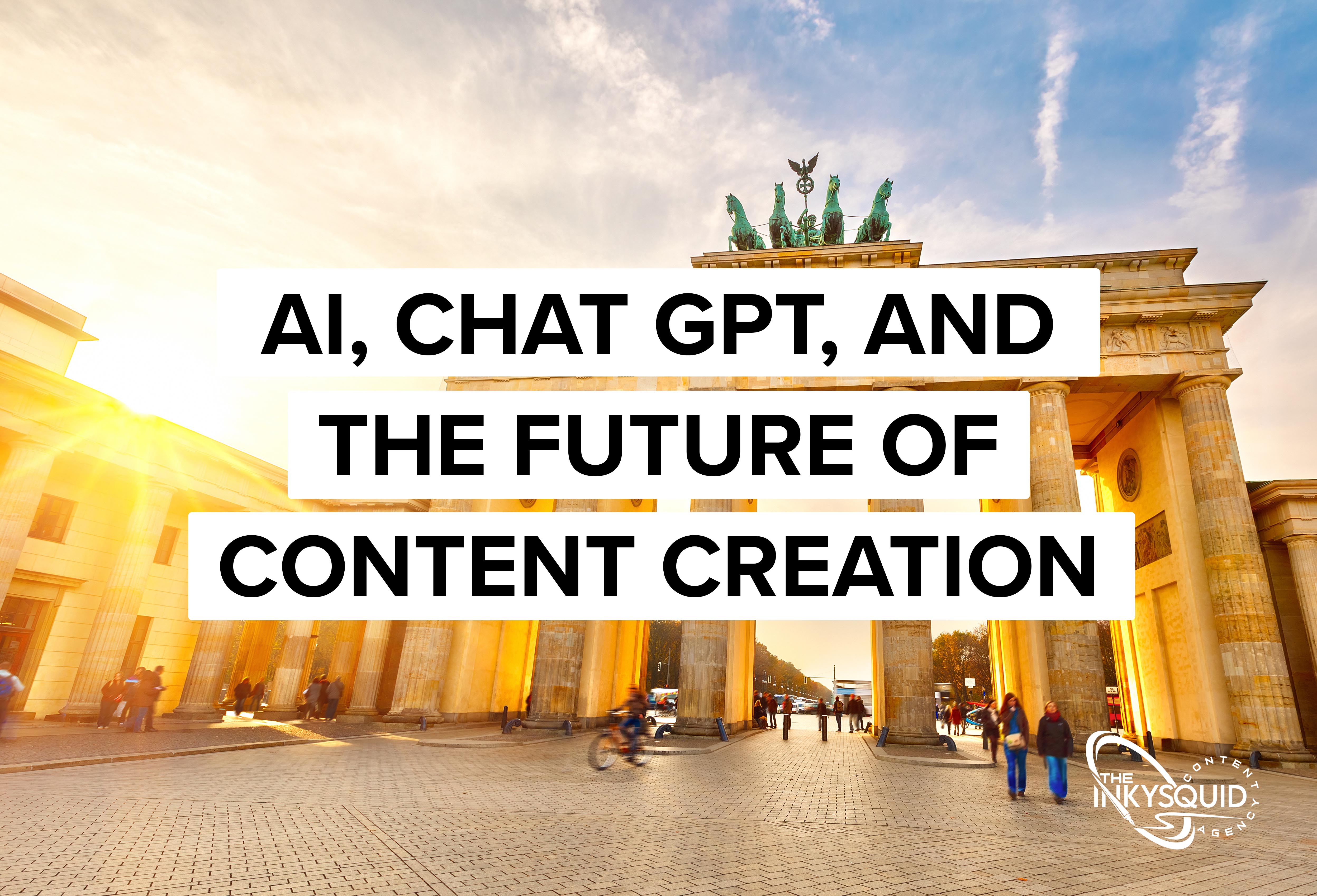Blog
Competition is squeezing the bottom line. Inefficient marketing has handicapped the top line. Stuck in between, managed service providers need an efficient, productive, and cost-effective MSP (Managed Service Provider) content marketing strategy to jumpstart business growth.
Statista estimates that the MSP industry will be worth more than $274.2 billion by 2026 from $152 billion in 2020, a CAGR of 11.2 percent.

(Image source: Statista.com)
However, this stellar growth does not mean that all MSPs are fully competent in marketing their services. In fact, this growth is driven mainly by the top players. Most MSPs struggle to close contracts because they rarely spend adequate time thinking and planning their marketing strategy. A large portion of the industry has a technical background, so they don’t have the marketing chops to get them through the door.
This leads to a low rate of lead generation and shortlisting of enough prospects who can then be converted into recurring revenue accounts.
And all this even as service providers are expected to deliver more complex and comprehensive services at competitive prices in an increasingly crowded marketplace.
Trust and credibility can create clear and sustainable competitive differentiation and advantage in a saturated, hyper-competitive, and price-sensitive industry.
However, inculcating these values into an MSP business would require a concerted marketing strategy. According to Datto’s 2021 State of the MSP Report competition, revenue growth, profitability, and acquiring new customers. The study noted that this wasn't surprising because MSPs have consistently reported sales marketing-related challenges in the previous State of the MSP surveys.

(Image source: datto.com)
In an industry composed of several small players, marketing and sales has predominantly been driven by referrals and word of mouth, an approach that, in isolation, delivers dwindling returns.
It is in this context of having to build a trusted and credible MSP brand with limited marketing and sales muscle – of having to jumpstart top- and bottom-line growth – that content marketing may be of particular value to managed service providers.
Especially considering the fact that content marketing can deliver three times the number of leads of traditional outbound marketing techniques at about a third of the cost.
Content marketing is already a key market and brand development technique deployed by most if not all growth-oriented MSPs. After all, it has been established that content marketing helps B2B companies successfully build trust and credibility with their audience.
In addition to this, content marketing can increase brand awareness, inform and educate prospects, generate leads, and establish the technological credentials of an MSP business.
However, there has to be a more orchestrated approach to content marketing in order to ensure that it delivers MSPs’ revenue and growth objectives. Here, then, are a few factors that service providers have to focus on in order to ensure that their content marketing programs deliver the appropriate outcomes.

1. Know Your Customer
Now, this may seem like a fairly obvious fact to state. After all, it is universally acknowledged that understanding the target audience and its needs and pain points defines the foundation of any marketing activity, including content marketing.
And MSPs have a range of techniques, including sales feedback, website analytics, keyword research, etc. to map buyers’ psyche. Leaving this critical step out means that MSPs run the risk of producing content that does not address their customers’ specific needs and concerns.
It is important to understand that in the B2B context, customers look for content that is helpful and informative, and not just a thinly-veiled sales pitch.
According to the State of Content Marketing 2022 report published by Semrush, improving the quality of content and making it more authentic was leading way companies were able to improve their organic ranking.

(Image source: semrush.com)
In addition, the study also found that creating content that resonates with the audience was one of the top challenges for marketers in all industries.

(Image source: semrush.com)
The study inspected over 500,000 web pages and polled 1,500 marketing marketers to arrive at its conclusions.
So, the question arises, how do you know what kind of content is authentic and resonated with your target audience?
One way is through data and analytical tools. You can use website analytics tools such as Google Analytics to track the behaviour of your website visitors. This will give you an understanding of what kind of content they are looking for and how they interact with your website. You can also use keyword research tools to understand the kinds of queries your target audience is searching for online.

However, as much as data and analytics are essential tools in the content marketer’s arsenal, sometimes direct conversations with customers and prospects can provide insights that can help validate and/or refocus even the most data-centric content strategies.
MSPs need to establish a two-way communication channel between customers and content leaders. This could take the form of content team members shadowing the sales and service teams on their calls. Or it could even be periodic telephone conversations or in-person events.
Whatever the format, these interactions can help MSPs identify predominant customer concerns and pain points, understand the factors that will maximize engagement and conversion, and define the content marketing strategies, formats and channels that best serve this specific audience.
Including direct customer interactions as an integral component of audience research enables MSPs to build comprehensive and actionable content marketing personas that can catalyze content marketing. More importantly, it allows content leaders to build out editorial calendars that address all pertinent issues with a coordinated and cumulative strategy.

2. Spread the Written Word
Written digital content is still the workhorse of most content marketing programs, and blogs are one of the most preferred formats within this category. A well-written SEO-optimized blog offers a set of unique opportunities.
They are easy to find through search engines, and ideal to share across social platforms. A blog strategy is relatively straightforward to plan, easy to execute, and can be designed to inform, educate and/or demonstrate the technical credentials of the MSP.
However, there are two important factors – consistency and variety – that can enhance the power of the written word.
Consistency is about sustaining engagement and ensuring that readers always have something new and interesting to consume. Of course, consistency has to be balanced against the need to provide honest, objective and helpful content. But inconsistent irregular content does little to generate or maintain the momentum of your content marketing campaign.
An MSP’s content editorial calendar needs to focus on creating a library of written content formats beyond just blogs. There are a variety of formats to choose from including testimonials, ebooks, case studies, white papers, FAQs, checklists, and tip sheets, to name a few. Each of these formats can be deployed for specific outcomes.
For instance, a white paper to demonstrate industry or technical knowledge, or a case study to highlight the MSP’s ability to solve specific customer challenges. Creating the right mix of written content formats allows MSPs to address every customer need with a format that fits the messaging.
Over and above all this, focus on creating content that is relevant to all buyer personas and targeted at every stage of the buying cycle.
3. Think Beyond Written Content
Did you know that a single minute of video content is worth 1.8 million words, according to Forester Research?
In fact, short-form video is increasing in importance. If Instagram and TikTok have taught us anything, it is that people love the engagement of video format that allows for content to be easily consumed, and it also provides an opportunity to build a personal connection with the audience.
Video is not just about entertainment – it can also be used to generate leads, close sales, or even support customers after purchase. Video delivers higher quality leads and improves conversion rates. For example, including an explainer video high up on the landing page increases the conversion rate by 80%.
Video may not replace the written word anytime soon, but its content marketing cache is definitely on the rise. According to the State of Content Marketing study quoted earlier, 41% of respondents have increased their use of audio/visual content, such as videos and webinars, and imagery, such as infographics, charts, and photos and found great success doing so.

(Image source: semrush.com)
There are a range of audio visual formats to choose from, including explainer videos, how-tos, demos and customer testimonials. Many of these formats may be especially pertinent to a technical and complex marketplace like MSPs.
Take whiteboard videos, for example – a simple-to-produce format featuring just a whiteboard and an expert. This can be quite effective in breaking down complex topics in an easy-to-consume visual format.
Similarly, video interviews with experts open up new engagement opportunities for MSPs to showcase in-house thought leadership and create credible content that addresses real-world customer issues.
Effective content marketing for MSPs will involve a variety of content types, including videos, podcasts, webinars and the written word, perfectly synchronized to address every content messaging need.
4. Create + Curate
A clear majority of B2B buyers expect content that has inputs from industry thought leaders. And not many MSPs can boast an in-house panel of thought leaders that can adequately fulfil this particular audience expectation.
Fortunately, content curation provides an alternative, and, as part of an MSPs content mix, it can be used to consistently deliver exciting new content, grow audience engagement, showcase expertise and build brand relevance – and all while reducing the cost and effort of generating content.
Curated content has helped marketers increase brand visibility, thought leadership, SEO, web traffic, buyer engagement and the number and/or quality of sales-ready leads.]

Content curation, however, is not as straightforward as merely linking to or sharing articles written by third parties. It is about adding value. It is the art of sourcing relevant third-party content and repackaging it with new information, commentary and insights to create something new and useful for your audience.
There are multiple benefits to content curation, including enhanced trust, credibility and influence, boosting Google rankings, and expanding an MSP’s audience and social media following. In addition, there are several tools, like ShareIt, Buzzsumo and Socialpilot, that can streamline the processes of finding relevant resources for your audience.
5. Repurpose for Increased Mileage and Productivity
Repurposing content is the process of taking existing content and optimizing it for different content formats and/or channels. There are several reasons why this approach can be useful. Content delivered in a single format and channel can often be drowned out by the sheer noise in the MSP content space.
Repurposing content increases the chances of it reaching the intended decision-makers. It can also improve content mileage by delivering it to audiences who may not be active on a particular channel.
And finally, repurposing allows MSPs to keep the wheel turning with evergreen content that can be updated and made relevant with minor changes. Some of the options available include turning facts delivered in a blog into infographics for social media, creating audio versions of written articles, and providing downloadable transcripts for videos.
Conclusion
These are just a few of the strategies that MSPs can focus on to enhance the efficiency and productivity of content marketing. What’s important to remember when trying to get the most out of your strategy is to ensure that your content marketing is tightly aligned with social media.
Combine inbound content strategies with a distribution strategy that positions content on external authority and influencer websites. And stay focused on informing and educating the audience rather than on selling.
If you need the highest-quality content for your MSP business’s lead generation, nurturing and sales strategies, theInkySquid has a dedicated team of professional writers, designers, and social media marketing experts to put their talent to work for your business.
Add a comment:
Categories
Want better qualified leads for your business?
Latest Blogs
Up to date with whats going, check out our latest blogs
29-03-2023 -
Artificial intelligence has been hitting the headlines in a big way since the end of 2022. Once a rather nebulous concept in the minds of the public, more likely to conjure images of killer science-fiction robots than any real-world application, the release of advanced chatbot application ChatGPT has brought AI into the mainstrea
28-07-2022 -
Introduction
You’re probably familiar in some way with the term “content marketing.” Yet you may be wondering exactly what it is -- and how it’s relevant to you, as a technology company.
07-07-2022 -
Competition is squeezing the bottom line. Inefficient marketing has handicapped the top line. Stuck in between, managed service providers need an efficient, productive, and cost-effective MSP (Managed Service Provider) content marketing strategy to jumpstart business growth.
We’ve been using The Inky Squid for a while now and Martin and his team have been an invaluable extension to our marketing team. As a small company, our need for help with content development is critical. The quality and detail of the articles they’ve written has been impressive. They’re able to write spot-on articles about an extensive variety of technical topics we request. They’re extremely responsive and the turnaround time for projects has been fantastic. We plan to have a long-term relationship with them.
Beth Powell, Expeed Software
The Inky Squid has been a provider of excellent material for our blog for many years. They have always been responsive to our requests and feedback. Highly recommended!
Doug Nebeker, Power Admin
At net2phone, we have been using The Inky Squid for content writing for a few years and love the service we receive. They produce quality and insightful content with quick turnaround times that helps us maintain an active blog and social media presence for our partners and our customers! The writers are knowledgeable, professional, and fast and I'd recommend their services to anyone looking for help with their content marketing strategies.
Denise Darienzo, net2phone
The Inky Squid is a nice team of marketing experts that quickly and effectively respond to the customer's demands. Their campaigns have a personal touch based on the customer's aesthetic; they're appealing to the eye, informative, and result in good engagement. We're happy with the collaborations we've had so far.
Viktoriya Gorod, Starwind Software
I highly recommend The Inky Squid to anyone looking to outsource or complement their content creation program. Their articles are well researched, interesting to read, and have helped us grow our audience. The quality of their work is outstanding, they are very dependable and I can't say enough good things about this company and their work!
Bill Lewis, New Offerings







